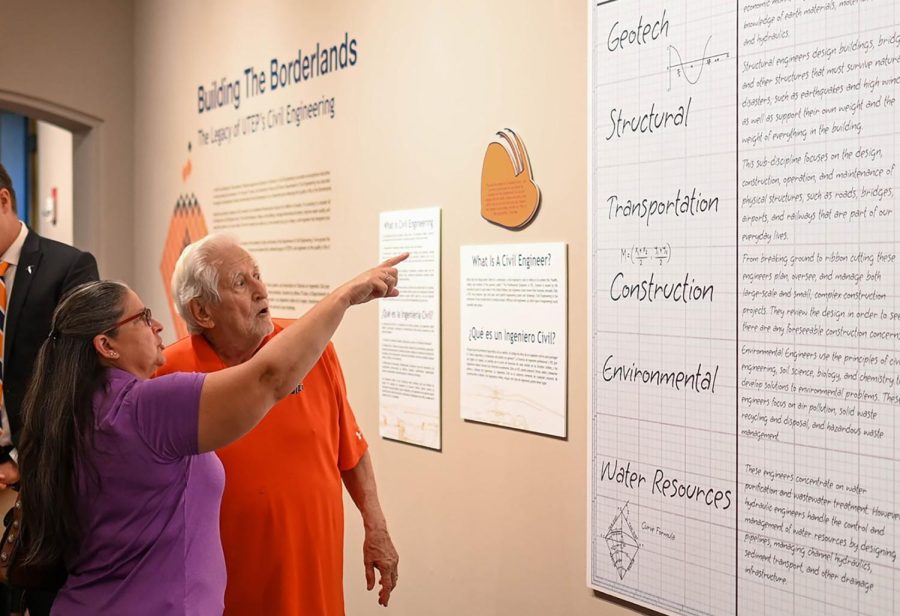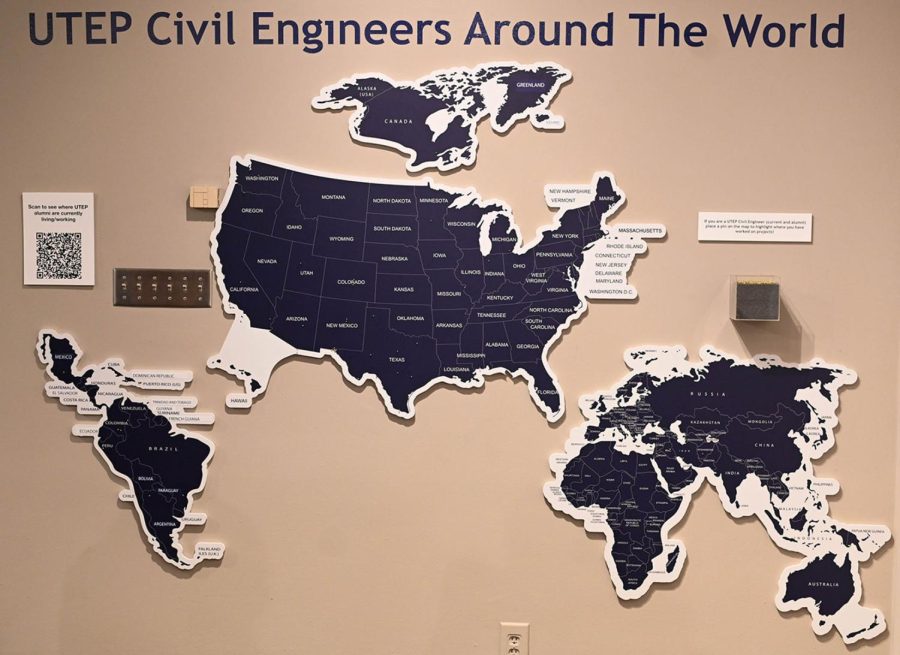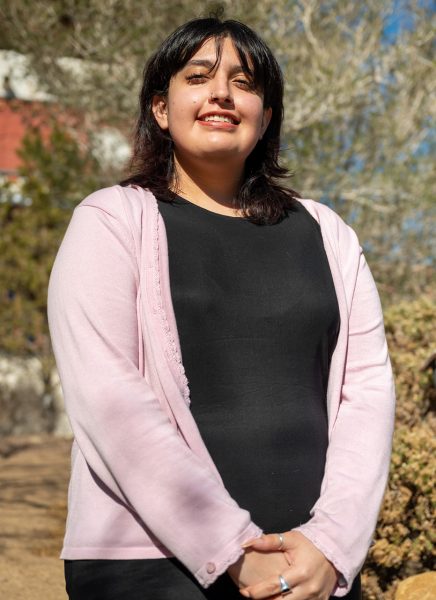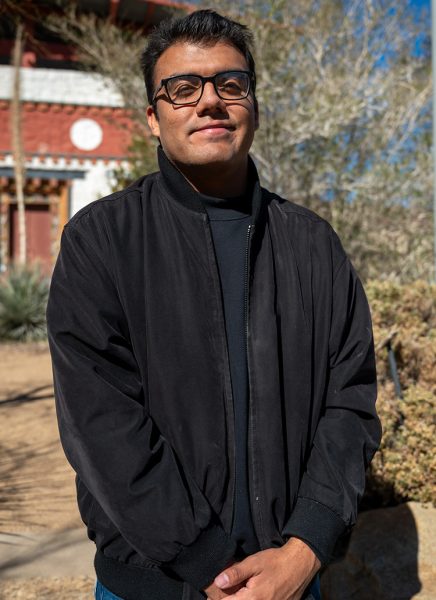Though many do not consider it throughout their day-to-day life, civil engineers have created the foundations on which our cities are built and continue to strengthen them so that our communities run safely and smoothly.
To honor 75 years of work that UTEP’s civil engineering faculty and alumni have done around the region, the “Building the Borderlands: The Legacy of UTEP’s Civil Engineering” exhibit held its opening reception Sept. 24 at UTEP’s Centennial Museum and Chihuahuan Desert Gardens. The idea for the exhibit came from professor and Chair of the Department of Civil Engineering, Carlos M. Ferregut, Ph.D.
“I thought it was important to show people that thanks to civil engineering graduates we have the quality of life that we have now,” said Ferregut in an interview about the exhibit.
There are many parts of the exhibit that highlight the work of UTEP civil engineers across the Sun City and along the border region. From the roads we walk, to the bridges we cross, to the water we drink; there are various portions throughout the museum that show how the civil engineers of El Paso supply our city’s infrastructure.
Upon entering Centennial Museum, there is a small room to the right that acts as a pop-up space for new exhibits. For “Building the Borderlands,” this room featured a mix of mockup sculptures and original canvas artworks.
The sculptures were completed by UTEP civil engineering and art students who formed paired teams to compete to produce a centerpiece for the main room. The main goal of the project was to create a piece that would honor the work accomplished by these engineers, while also showing the historical and cultural significance of their work within the region.
While all the mockups were displayed and given descriptions of the art-engineer pairing, the winning piece was carried through to full production and is now highlighted in the main room of the exhibit.
The canvas artwork also being displayed in that room was donated by artist Patrick Gabaldón. The piece that initially earned him a collaboration with the UTEP civil engineering department was his depiction of the I-10 Highway “Spaghetti Bowl” intersection. Through this piece came multiple paintings that showcase the different engineering projects that UTEP graduates have been a part of, while also displaying some of the most beautiful parts of El Paso.
In the main room, there is a walk-through historical tour that explains what civil engineering is and details the work civil engineers do across the Borderlands.
Visitors get a full spectrum view of just how broad the field can be. There are pictures and descriptions that span across multiple rooms showing things like work done to help mitigate storm water, treat our drinking water, build our highways and construct our buildings. There are also fun cases that display the tools used by civil engineers throughout the years to achieve these feats and QR codes that link people to different engineering projects.
The people viewing the more historical and dated parts of the exhibit will really see just how innovative civil engineers are and just how integral their work is.
“Many times, I tell the students that human beings are civil engineers by nature,” Ferregut said. “Our ancestors, the Inca, the Maya, the Aztecs, the Romans, they were building great cities or great infrastructure systems before the word(s) civil engineering, or ‘Ingeniería civil’ in Spanish, (were) invented.”
Once it was time for them to present the exhibit, the reception panel featured many speakers that were involved in making “Building the Borderlands” possible, including UTEP President Heather Wilson.
“We sometimes take for granted the impacts that civil engineering has on our lives,” Wilson said during the reception. “Because if it’s done well, not many (people) will notice it.”
She explained that most individuals will not take note of free flow traffic or immediate access to clean water. Most of the panel spoke on how they, their colleagues and even current students will continue to make these impacts for years to come.
“I’d like to leave you with those three words: family, freedom and the future,” said assistant professor of instruction for the department of civil engineering, Joanne Moyer, Ph.D. “And that future starts now. That future of impacting our local community starts now, and it starts with this exhibit.”
“Building the Borderlands: The Legacy of UTEP’s Civil Engineering” will be open from Sept. 24, to June 10, 2023.
The hours of operation for the Centennial Museum are Monday through Saturday, 10 a.m. to 4 p.m.
For more information visit utep.edu/centennial-museum/
Meagan Garcia is the arts & culture editor and may be reached at [email protected].














